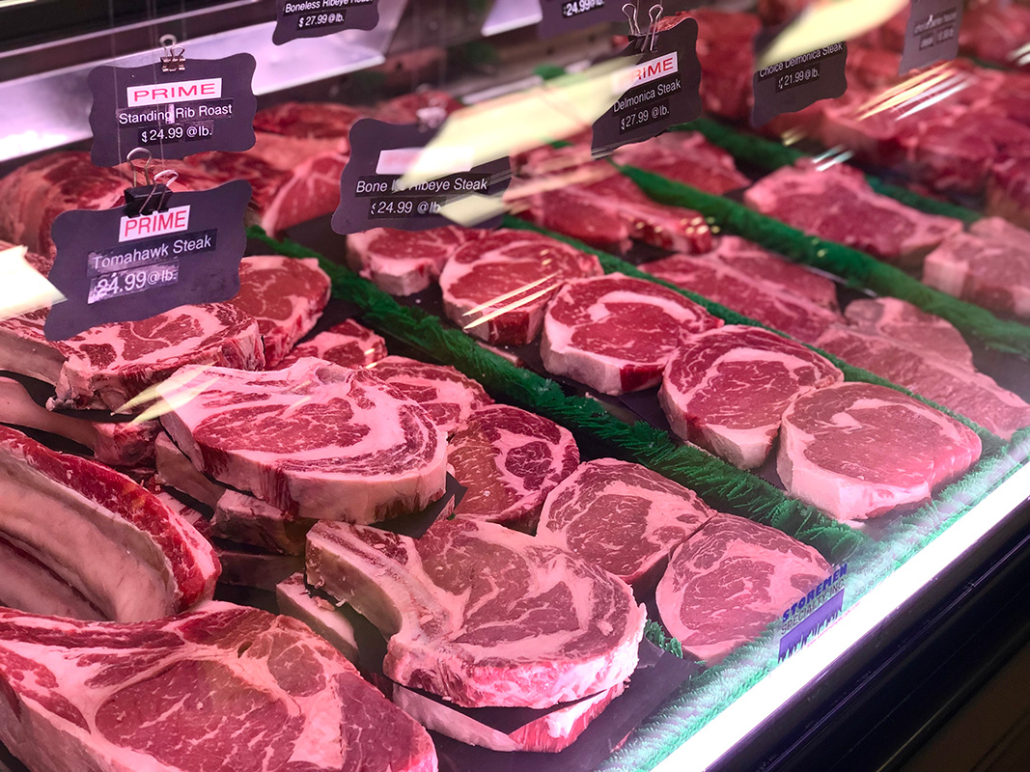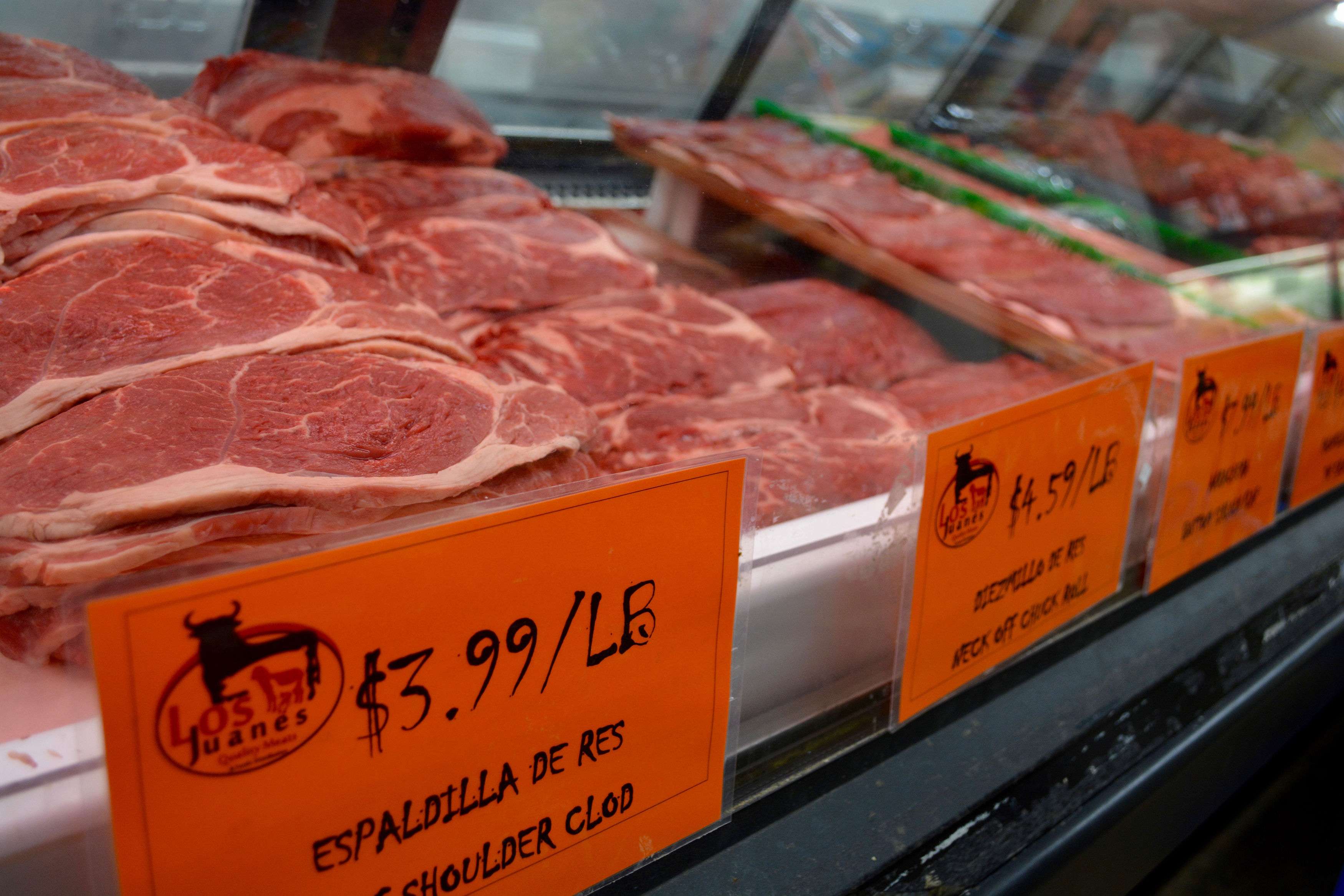Discover Fresh Cuts at Bagley Farms Meat Market Edwardsville IL for Your Next barbeque
Reveal the Art of the Butcher's Cut in a Modern Meat Market
In the ever-evolving landscape of modern meat markets, the butcher's cut has actually transcended its conventional roots, combining old-time craftsmanship with contemporary practices. What really establishes the modern-day butcher apart is their capability to create a much deeper connection between customers and the beginnings of their meat.
Development of Butchery Techniques
The advancement of butchery methods mirrors an abundant tapestry of innovation and adaptation driven by developments in technology, adjustments in customer demand, and a much deeper understanding of meat scientific research. Historically, butchery was a craft passed down through generations, with approaches developed over centuries to optimize return and taste. Nonetheless, the industrial transformation introduced mechanization, changing standard techniques and allowing large handling.
The mid-20th century saw butchery methods better refined by scientific understandings into muscular tissue biology and meat aging, improving both tenderness and taste. Technologies like vacuum packaging and refrigeration prolonged item shelf-life, allowing butchers to expand offerings and boost top quality control. This duration additionally marked the surge of specific tools, such as band saws and meat slicers, which increased precision and performance in meat handling.

The 21st century has presented digital modern technology into the butchery world. Computerized systems currently help in monitoring animal provenance and optimizing cuts to satisfy specific customer choices. In addition, a resurgence in artisanal butchery has emerged, mixing standard abilities with modern-day expertise to deal with consumers looking for ethical and lasting meat choices. This advancement highlights a vibrant interaction between tradition and advancement, meeting modern demands while protecting the craft's heritage.
Comprehending Meat Cuts
Comprehending the ins and outs of meat cuts is important for both butchers and customers seeking quality and worth. Each cut comes from a different part of the pet, giving unique flavors, textures, and cooking techniques - bagley farms meat market edwardsville il. Mastery of these differences not just enhances culinary experiences yet additionally maximizes the utility of each carcass. For butchers, accurate cuts mirror ability and regard for the craft, making sure very little waste and optimum return.

Understanding muscle make-up is essential; muscles used much more regularly by the pet tend to be harder and are best fit for sluggish food preparation methods, while less-used muscles, like those found in the loin, are a lot more tender and suitable for grilling or roasting. Familiarity with these distinctions equips customers to make educated choices, boosting their cooking undertakings.
Choosing Top Quality Meat
Picking the best meat includes even more than just selecting a visually enticing item from the display. The art of selecting high quality meat calls for a discerning eye and knowledge of specific characteristics that indicate quality and quality.
Second of all, take into consideration the marbling, which describes the white flecks of fat within the muscle mass. Correct marbling is a key indicator of check this site out tenderness and taste, as it thaws throughout cooking, boosting the meat's juiciness. Keep in mind, higher marbling frequently correlates with premium top quality cuts, such as USDA Prime.
Appearance is another essential variable; click site meat ought to feel firm to the touch, not slimy or overly soft. Additionally, be mindful of the aroma. Fresh meat ought to have a tidy, neutral odor, cost-free from any type of sour or repulsive smells.
Pairing Cuts With Food Preparation Approaches

On the other hand, harder cuts like brisket and chuck roast are abundant in collagen, which damages down right into gelatin when prepared slowly. These cuts are perfect for braising or slow roasting, allowing the meat to tenderize gradually and develop deep, complicated tastes. Similarly, cuts such as short ribs and pork shoulder get on well with slow-cooking methods, where prolonged cooking times transform their durable structures into succulent recipes.
Lamb shanks and oxtail, which need extended cooking to soften, are excellent prospects for cooking or slow-moving simmering. These approaches coax out abundant, passionate tastes while keeping moisture. By comprehending the one-of-a-kind features of each cut, cooks and home chefs alike can elevate their cooking productions, ensuring Home Page each meal is both pleasing and memorable.
The Butcher's Role Today
Browsing the progressing landscape of the modern-day meat market, the butcher's duty today extends past simple prep work of cuts. Contemporary butchers are cooking artisans, teachers, and supporters for sustainable methods.
Along with crafting accurate cuts, butchers now involve directly with consumers, using cooking guidance and customizing options to match individual needs and preferences. Their know-how in meat aging, marbling, and taste profiles encourages consumers to make informed choices, enhancing their culinary experiences. This tailored solution exemplifies the butcher's progressing role as a relied on expert in the cooking area.
Moreover, butchers are critical in minimizing waste, utilizing entire pets to produce varied items such as sausages and stocks. This extensive technique not just respects the pet but additionally straightens with modern sustainability objectives. This way, the modern-day butcher embodies both custom and advancement, adjusting to an ever-changing market while maintaining the artistry and honesty of their craft.
Conclusion
The contemporary butcher's craft intricately weaves traditional methods with contemporary technologies, emphasizing lasting techniques and moral sourcing. Mastery in comprehending diverse meat cuts and high quality signs equips butchers to offer enlightened recommendations, straightening certain cuts with optimum cooking methods. This knowledge not only boosts cooking experiences but additionally strengthens the connection in between consumers and the beginnings of their food. By honoring historical methods while welcoming contemporary demands, the butcher's role remains crucial in today's sophisticated meat market (bagley farms meat market edwardsville il).